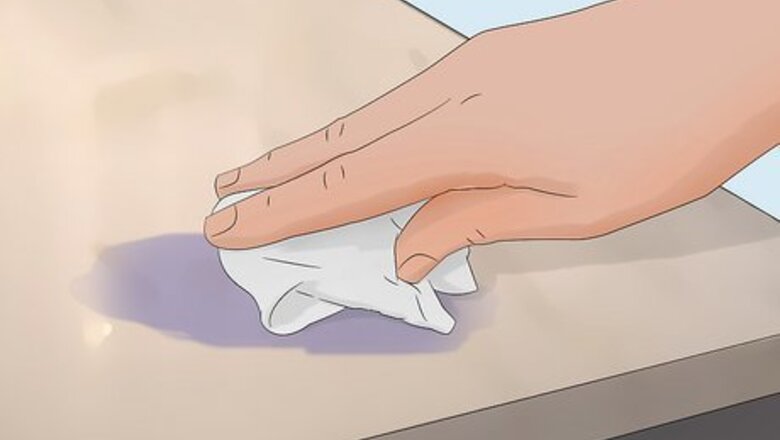
views
- Clean your countertops daily with a microfiber cloth wet with warm water and a few drops of dish soap.
- Spray a pH-neutral stone cleaner onto your counters, let it sit for 15 minutes, and wipe it off for a deeper clean.
- Apply a poultice over a stain on your countertop and let it dry out for 1–2 days to absorb the stain. Then, scrape off the dried poultice with a plastic putty knife.
- Wipe up spills as soon as you notice them to prevent them from leaving a stain on your countertops.
Basic Cleaning
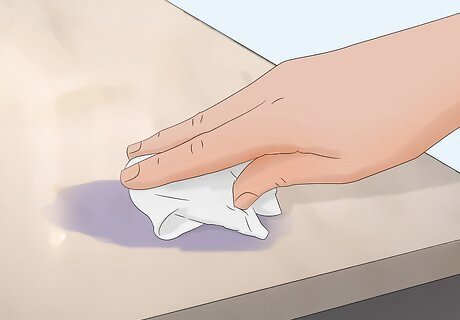
Clean up spills with a microfiber cloth as soon as possible. Stick with a soft, non-abrasive cloth so you don’t scratch the surface. Right when you notice a spill on your quartzite countertops, grab your cleaning cloth and blot it up. Make sure you sop up all of the liquid so it doesn’t soak into your counters and leave a deeper stain. Try to be really quick if you’re cleaning up something acidic, like citrus juice, vinegar, or soda, since it could break down the seal covering the quartzite. Avoid wiping the spill since you could spread it over your countertops and create a larger stain.
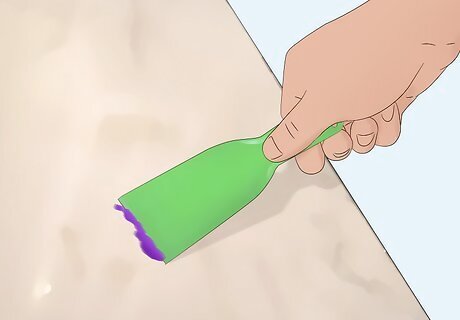
Scrape off any hardened residue with a plastic putty knife. Hold the putty knife so it’s at a 45-degree angle to your countertops. Apply light pressure and push the edge of the putty knife through the residue that’s stuck on the surface. Scrape back and forth until you completely remove the debris. Steer clear of metal putty knives or any abrasive tools, like scrubbing sponges or steel wool, since they could scratch quartzite or damage the seal.
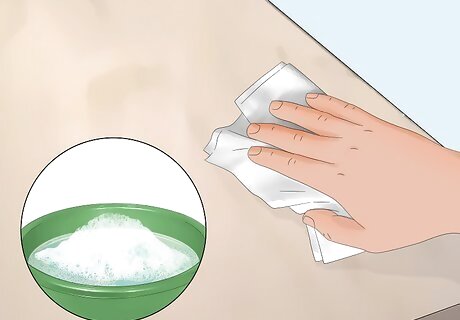
Wipe your countertop with hot soapy water for a quick daily clean. Mix a few drops of dish soap in a bowl of hot water, and wet a microfiber cloth with it. Clean your counters by wiping them with your damp cloth so you can get rid of any dust or residue on the surface. Immediately wipe up water that’s left on your counters with a clean, dry towel. Avoid using more soap than you need since it could leave a film on your counters.
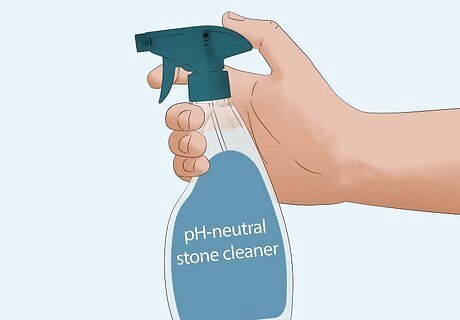
Use a pH-neutral stone cleaner for a deeper clean. Make sure that your stone cleaner is non-abrasive so it doesn’t damage or scratch your counters. Spray the cleaner directly on your countertops. Let the cleaner sit for about 10 minutes before wiping it off with a soft sponge or microfiber cloth. Avoid using any cleaners that contain ammonia, citric acid, or any other type of acid since they can eat through the sealant and make your quartzite more susceptible to damage. You can use ammonia-free Windex to clean your quartzite countertops safely.
Stain Removal
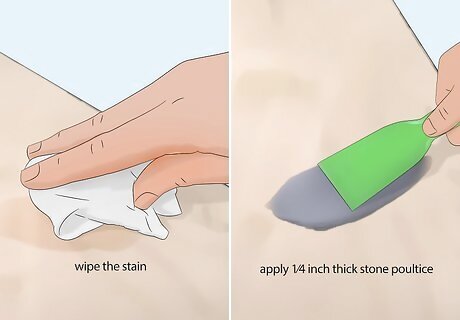
Apply a commercial stone poultice over the stain. Wipe the area where you’re applying the poultice clean with a soft cloth. Then, use a plastic putty knife to scoop the poultice out of the container and onto the stain. Spread the poultice so it’s about ⁄4 in (0.64 cm) thick and extends past the edges of the stain by about 1 inch (2.5 cm). A stone poultice is a thick paste-like substance that helps absorb stains that have soaked deeper into your countertop. You can make your own poultice to treat oil-based stains by mixing equal parts baking soda and water. If you get poultice powder, try mixing it with mineral spirits for an oil-based stain or 12% hydrogen peroxide for an organic food stain.
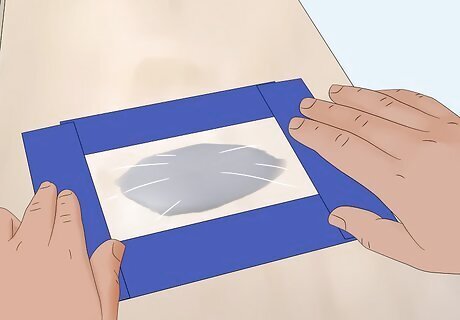
Tape plastic wrap over your poultice. Tear off a piece of plastic wrap large enough to cover the entire poultice. Lay the wrap on top of the poultice and smooth it until it’s flat. Then, just put strips of masking tape along each edge of the plastic wrap to seal it. Taping the plastic wrap down helps keep your poultice wet for longer so it has more time to draw the stain out from the quartzite.
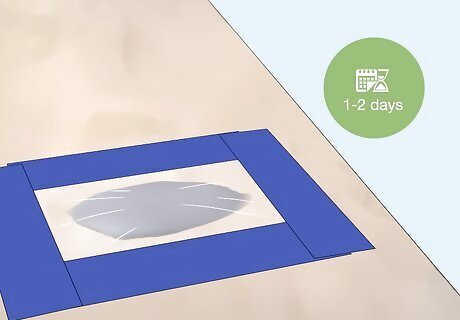
Let the poultice dry for 1–2 days. After the first day, take the tape off of one of the edges of your plastic wrap so the poultice can continue drying. When your poultice feels hard to the touch, then it’s completely dry. As your poultice sits on your countertop, it will pull the stain out from the pores in the stone. Larger stains might take a little longer to draw out, so try leaving it alone for 2–3 days instead.
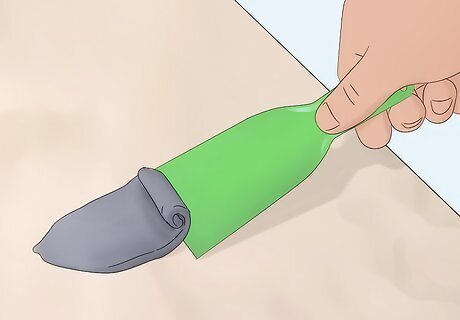
Scrape off the poultice with a plastic putty knife. Put the edge of your putty knife against the hardened poultice and gently break it apart. If you have trouble getting it off, wet your poultice with distilled water and continue scraping until you remove it completely. Then, wipe your counter with a soft microfiber cloth so it’s dry. Avoid using any abrasive sponges or metal putty knives so you don’t scratch your countertops.
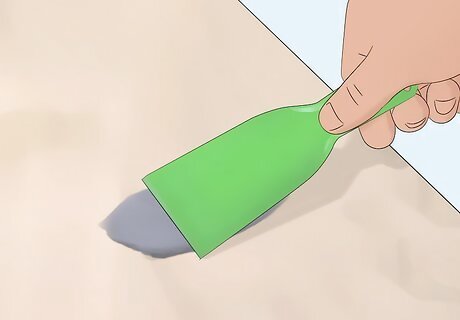
Apply another poultice if you still see a stain. Check the section of your countertop that you just treated to see if the stain is still noticeable. If it still shows through on your countertop, spread another poultice over the stain and clean it off once it’s dry. It may take up to 5 poultices to remove difficult stains from your quartzite countertops. If you can still see a stain after applying multiple poultices, contact a stone specialist in your area to have them clean your counters for you.
Caring for Quartzite
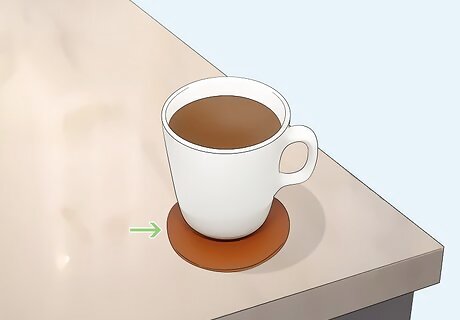
Put your drinks on coasters. No matter if you’re having a hot or cold drink, set your cup on a coaster to add a layer of protection and stop liquids from touching your countertop. If you leave a drink directly on the countertop, there’s a good chance some of the moisture will get onto your countertop and potentially soak into the stone. Avoid keeping bottles of cooking oil on your countertops since they can easily drip and get on your countertops. Keep them in a cabinet or on a different shelf instead.
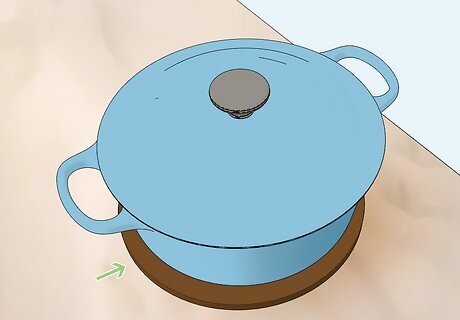
Set hot pots and pans on hot pads or trivets. If you’re serving a hot dish, place a trivet or pad on your counters before putting the pan on top of it. If you don’t have any hot pads or trivets, then fold a towel in half and set the dish on that instead. High heat can damage or discolor quartzite countertops. Similarly, avoid using deep fryers, rotisseries, or toaster ovens directly on your countertops since they can get really hot or splatter oil on the surface.
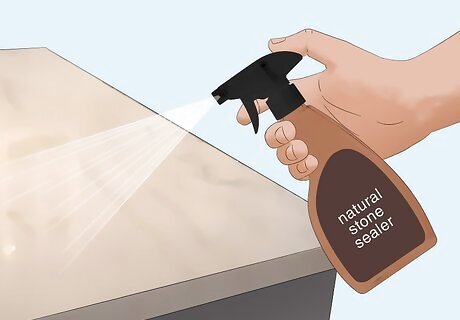
Reseal your countertops every 6 months. Clear and clean off your countertops so you start working with a fresh surface. Spray a natural stone sealer onto your entire countertop to coat it. Let the sealer sit for about 15 minutes before wiping up any excess still on the surface with a microfiber cloth. Then, just wait 1 hour before you use your counters again so the sealer has time to completely set. To test your countertops to see if they need a new seal, sprinkle a few drops of water on the surface. Wait a few minutes and then check the drops’ appearance. If the drops retain their shape, then your countertop is still sealed. If the water spreads out and absorbs into the surface, then it’s time to apply sealer.



















Comments
0 comment